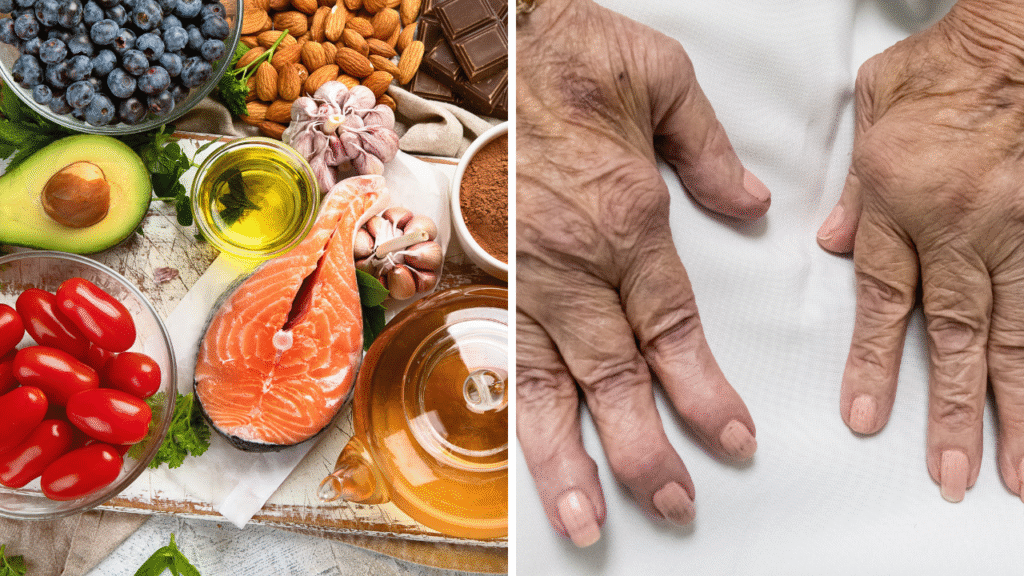Rheumatoid arthritis (RA) is more than just joint pain—it’s a severe autoimmune disorder that can lead to permanent joint damage and disability if left untreated. Recognizing the early warning signs of RA is crucial for starting treatment early and preserving joint health. In this blog post, we’ll walk you through the key symptoms you shouldn’t ignore and what to do if you suspect something’s wrong.
What Is Rheumatoid Arthritis?
RA is an autoimmune condition, which means your body’s immune system mistakenly attacks its healthy tissues. In RA, the primary target is the synovial membrane, a lining inside your joints that helps them move smoothly. When inflammation strikes this lining, it leads to swelling, pain, and, over time, permanent damage to the joints.
Unlike osteoarthritis (OA), which is caused by wear and tear, RA can occur at any age, progresses faster, and often affects both sides of the body symmetrically.
Early Warning Signs of RA
Catching RA early makes a huge difference. Here are the top symptoms to watch for:
Joint Pain and Stiffness
One of the hallmark symptoms of rheumatoid arthritis is persistent joint pain often accompanied by morning stiffness. This discomfort typically affects both sides of the body symmetrically, such as in your wrists, fingers, knees, or toes.
Key Characteristics:
- Pain lasting longer than six weeks
- Morning stiffness that lasts more than one hour
- Common in small joints — fingers, wrists, and toes
- Makes daily tasks like buttoning a shirt or brushing teeth difficult
Unlike osteoarthritis, RA pain is not just due to wear and tear — it’s caused by inflammation resulting from an overactive immune system.
If you notice these symptoms persisting over time, don’t ignore them. Early diagnosis is critical in managing rheumatoid arthritis and preventing joint damage.
Fatigue and Low-Grade Fever
Another early sign of rheumatoid arthritis is an overwhelming sense of fatigue that doesn’t improve with rest. This isn’t just normal tiredness — it’s chronic exhaustion that can affect your productivity, mood, and quality of life.
Key Characteristics:
- Persistent fatigue even after a full night’s sleep
- Low-grade fevers without signs of infection
- May appear before joint pain begins
- Can contribute to emotional distress and even mild depression
Fatigue in RA is caused by ongoing inflammation and the immune system’s attack on healthy tissues.
If you’re experiencing unexplained tiredness paired with low fevers and no other illness, it could be your body’s early signal of rheumatoid arthritis.
Joint Swelling and Tenderness
One of the hallmark early symptoms of rheumatoid arthritis is swelling and tenderness in the joints — often beginning in the small joints of the hands and feet.
Key Characteristics:
- Soft, warm, and swollen joints
- Symmetrical joint pain (both hands, both knees, etc.)
- Discomfort worsens with inactivity, especially in the morning
- Joint tenderness may appear before visible swelling
This isn’t the swelling you get after bumping your elbow — RA swelling is persistent and feels more like inflammation under the skin.
If you notice that your joints are consistently puffy, sore, or tender, it’s essential to seek a medical evaluation, especially if these symptoms persist for more than six weeks.
Morning Stiffness That Lasts Over 30 Minutes
A classic early sign of rheumatoid arthritis is morning stiffness — that stiff, achy feeling in your joints when you wake up.
How to Identify It:
- Stiffness lasts longer than 30 minutes to an hour
- Affects multiple joints, especially fingers, wrists, knees
- Unlike normal stiffness, it doesn’t ease quickly with movement
- Makes getting out of bed or doing morning tasks challenging
In contrast, osteoarthritis stiffness tends to fade within 15–20 minutes. RA stiffness lingers and may return after periods of rest.
If your joints feel “stuck” or rigid in the mornings for several weeks in a row, it’s a strong indicator that inflammation is active and may point to rheumatoid arthritis.
Fatigue and General Malaise
Persistent fatigue is one of the earliest — and most overlooked — signs of rheumatoid arthritis. It can appear weeks or even months before joint symptoms develop.
What You Might Feel:
- Ongoing tiredness even after a good night’s sleep
- A sense of being “run down” or flu-like symptoms
- Difficulty concentrating or feeling mentally foggy (“RA brain fog”)
- Low-grade fever and loss of appetite in some cases
This fatigue is due to the body’s immune system being in a constant state of inflammation, even when you’re not in visible pain.
Fatigue in RA is not just about being tired — it’s a whole-body signal that inflammation is quietly damaging your joints and tissues. If you’ve felt off for a while, don’t ignore it.
Related Posts:
- what-are-rheumatoid-arthritis-and-osteoarthritis/
- What Is Rheumatoid Arthritis? Causes, Symptoms and Diagnosis
Swollen Joints and Tenderness
Swelling and joint tenderness are hallmark signs of rheumatoid arthritis. In early stages, this swelling might be subtle, but it’s often persistent and symmetrical (affecting the same joints on both sides of the body).
Common areas affected:
- Fingers
- Wrists
- Knees
- Ankles
- Toes
What to Watch For:
- Puffiness or warmth around joints
- Pain when pressing on the joint (even gently)
- Tightness or “fullness” feeling in small joints
- Difficulty putting on rings or holding items
RA joint swelling lasts more than just a few days and doesn’t subside with rest, unlike in other conditions.
Early detection of this swelling can prevent permanent joint damage and loss of function with the right treatment.
Easy-to-Miss Signs
Some symptoms are mild or intermittent and can be mistaken for:
- General fatigue
- Overuse injuries
- Normal aging or weather-related joint stiffness
If you notice any recurring joint issues, don’t wait—RA progresses fast, and early treatment is key.
When to See a Doctor
Make an appointment if:
- You have persistent joint pain or swelling for more than a few weeks
- Morning stiffness lasts longer than 30–60 minutes
- You feel constantly fatigued or weak for no clear reason
A rheumatologist (a doctor who specializes in arthritis) can help with early diagnosis and treatment planning.
How RA Is Diagnosed
Doctors typically use a combination of:
- Blood tests: Rheumatoid factor (RF), anti-CCP, CRP, and ESR
- Imaging tests: X-rays, MRI, or ultrasound to check for joint damage
- Physical exams and review of your medical history
Why Early Detection Matters
Catching RA early means:
- Preventing permanent joint damage and deformities
- Improving your quality of life and daily function
- Slowing disease progression through early medication (DMARDs and biologics)
Final Thoughts
Rheumatoid arthritis can sneak up subtly—but your body often gives you clues. Don’t ignore joint stiffness, fatigue, or unexplained aches and pains. The earlier RA is detected, the better your outcome can be.
Your joints are worth protecting. If you notice the signs, talk to your doctor today and take control of your health before the disease takes control of you.
Related Posts:
- what-are-rheumatoid-arthritis-and-osteoarthritis/
- What Is Rheumatoid Arthritis? Causes, Symptoms and Diagnosis






